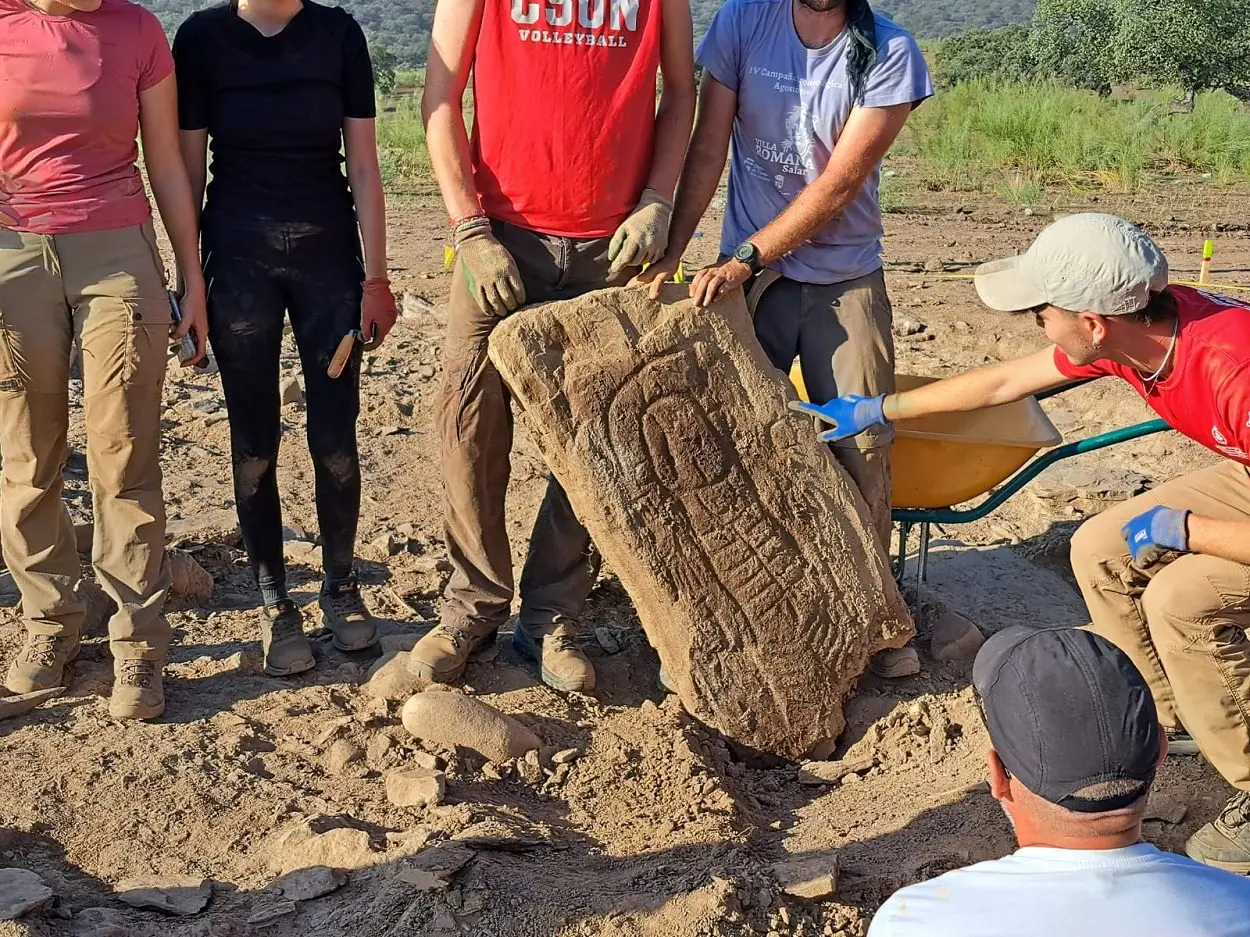Archaeologists have uncovered a decorated stela in the complex of Las Capellanías, located in Cañaveral de León, Spain.
Las Capellanías is a large 3,000-year-old necropolis containing funerary monuments, ancient burial mounds, stone cists, and cremation pits.
Excavations of the site are part of the Maritime Encounters project run by the University of Gothenburg, also involving archaeologists from Durham University, the University of Seville, and the University of Southampton.
In a press release issued by Durham University, the researchers have discovered a decorated stela, the third stela found at the site and the second one still in context.
According to the researchers, the stela was likely placed as a territorial marker for funerary monuments within one of the most important natural pathways linking two main river basins. During late prehistory, these pathways were key communication ‘highways’ between the middle Guadiana and the lower Guadalquivir basins.
This also indicates that stelae-making could have been an activity invested with special meaning, carried out as part of funerary rituals in Late Bronze Age and Early Iron Age Iberia.
The fact that three stelae have been found at Las Capellanías funerary complex indicates that previous finds of other grouped stelae – e.g. those stelae found in Hernán Pérez in northern Cáceres, central-west Spain, now part of the collections of the National Archaeology Museum in Madrid – could have corresponded also to stelae that were originally set in funerary complexes.
The recently discovered stela in Cañaveral de León exhibits distinctive features, including what appears to be a necklace or a headdress. These characteristics are commonly associated with stelae categorised as ‘headdress’ or ‘diademated’ stelae, often interpreted as representing females.
Conversely, attributes typically encountered on stelae known as ‘warrior’ stelae, such as depictions of swords, are typically linked to male representations. This categorisation of standardised iconography, which may be related to specific societal roles, has been primarily derived from a limited number of stelae displaying sexual characteristics.
According to the study: “The stela 3 of Cañaveral de León changes all this.”
“It combines traits of ‘headdress’ and ‘warrior’ types, showing that the social roles depicted by these standardised iconographies were more fluid than previously thought. Furthermore, as the new stela also includes male genitalia, it demonstrates that these social roles were not restricted to a specific gender, but could be associated with different genders,” said the study authors.
Header Image Credit : University of Durham







